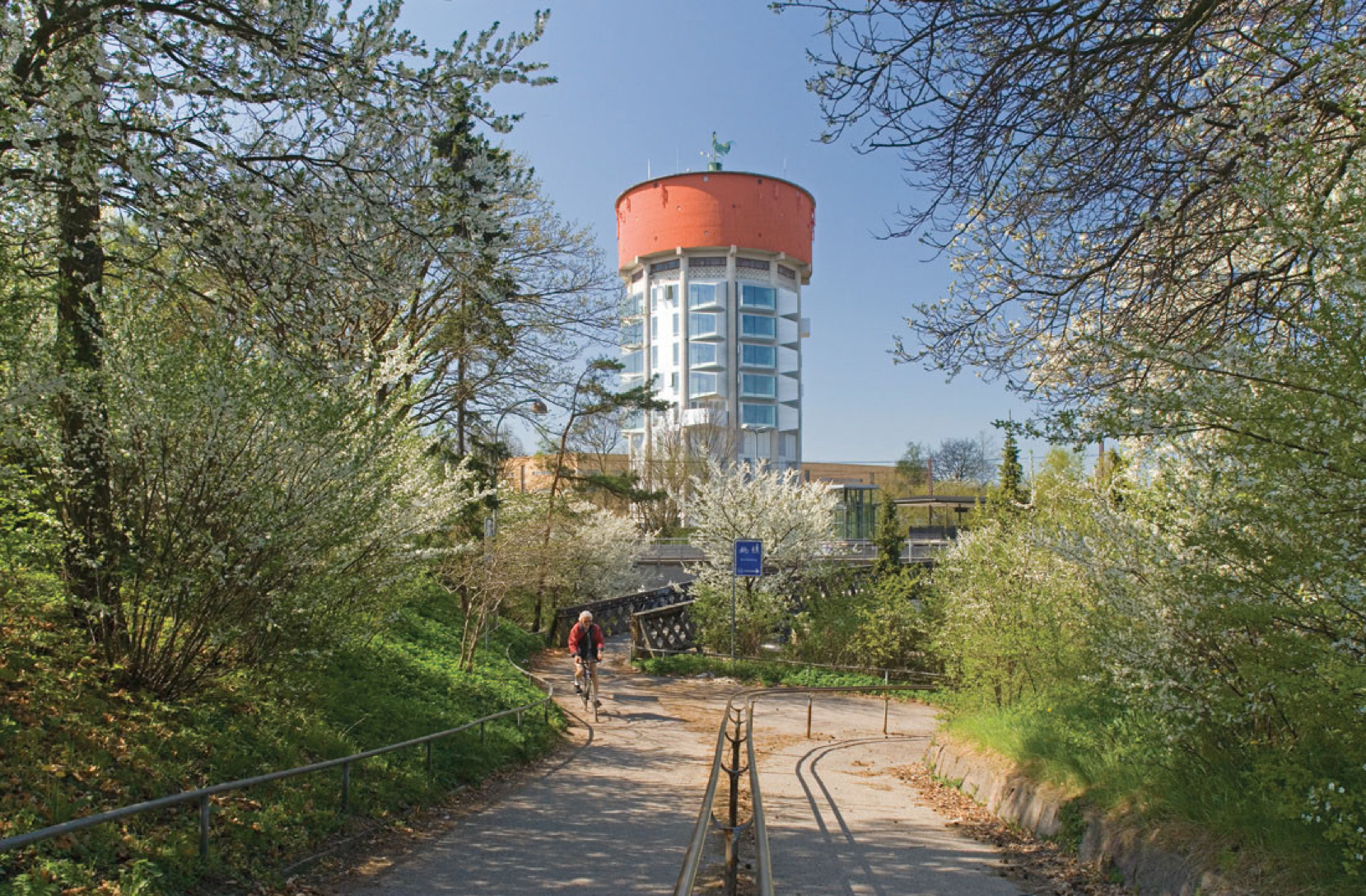Home. It takes many forms, and can range from a sprawling oceanside mansion to a small urban studio apartment… a quiet suburban home to a mattress in the back of a van. The idea of home can elicit different feelings, and it isn’t even always a safe place to some of us. For this week, we’ll look at matters surrounding housing disparities – primarily for urban areas – and some positive ideas in the housing realm.
Housing Disparities
A few glaring historical instances of housing disparity directed towards minority communities in the United States are packaged into terms such as redlining, blockbusting, restrictive covenants, and white flight. We’re going to focus on redlining in this article for the sake of brevity, but I highly recommend looking into those other terms to learn more.
Redlining was originally a practice in which predominantly minority communities were labeled as riskier for mortgage insurance and lending purposes starting back in the 1930s.
Notice higher percentages of “Latino or Hispanic” and “Black” population shares within historically redlined areas.
Being labeled as a risk, these communities were then less likely to be offered mortgages and were overlooked for real estate investment. Less investment = less home ownership and less land development. Redlining is named for the city maps created by the Home Owners’ Loan Corporation (established under the New Deal in the 1930s) as well as private organizations. Red areas on these maps, primarily minority communities, were those designated as financial risks. The term “redlining” has evolved over time to encompass diminished access to other services in predominantly minority communities, including less access to healthcare or supermarkets.
Historical discrepancies in housing such as those mentioned can resonate for a long time and across generations since houses and land are such a significant and long-term investment for most people. With housing and land being a major vehicle for wealth accumulation, one article by OECD economists explains that countries with higher home ownership rates typically have lower wealth inequality.
Taking a different approach, we can look at housing disparities in terms of surrounding land use. Some areas are just not as desirable for living and can even be harmful to health. I’m sure a majority of people would not be thrilled to live next-door to the municipal sewage treatment plant, for example. While there’s a good chance that the house next to the sewage treatment plant costs less because of its location, this location may also cause health issues for those residents. One study published in the Journal of Environmental and Public Health indicated that living near a wastewater treatment plant resulted in increased reports of respiratory and skin diseases among residents. Undesirable and polluting land use near residential housing is nearly ubiquitous, and some of this can’t necessarily be avoided, right? After all, the wastewater treatment plant exists because there ARE people nearby that produce the wastewater. An important question to ask, though, is whether certain neighborhoods have to deal with a higher proportion of these polluting facilities.
This idea of housing disparity caused by proximity to pollutants can also be seen on a regional scale. The not-so-endearing nickname of “cancer alley” is given to a stretch of land in Louisiana with a large number of industrial petrochemical facilities; consequently, the incidence of cancer in this area is higher than average.
An interesting TED Talk discussing the layout of cities and the effects of industrial air pollution was given in 2018 by an anthropologist named Stephen DeBerry. Check it out here:
Reflected throughout housing disparities is the price of homes, rent, and land itself. Sure, the Villa Leopolda residence in France might be a cool place to live, but a value close to $750 million as one of the most expensive homes in the world might be a tad out of your budget. Housing and rent prices typically follow the basic economic principle in which an increase in demand (or decrease in supply) creates an increase in price.
Villa Leopolda...you probably can’t afford this house. :(
It may be difficult to exactly pin down housing demand (one study by non-profit Greater Greater Washington provided an example in which job growth in the metro area didn’t actually correlate to an increase in housing demand), but one idea that may offset increasing housing prices is housing density. Increasing the supply of living spaces in a fixed area (i.e. increasing density) usually results in lower housing and rent prices which are then more affordable. Some areas restrict higher-density housing, though, and these restrictions have been shown to increase the segregation of socioeconomic classes according to studies published in Urban Affairs Review and Social Science Quarterly. Such restrictions on high-density housing are supported by current residents and homeowners in some situations, who often show concern that the new housing will decrease property value or create other issues in the community. A recent situation in suburban Lafayette, California highlights this conflict where some residents of the Lafayette community fervently opposed construction of new apartment units, even going so far as to have the case go to court. It’s an oversimplification to say that increased housing density is good for communities, though, because density is not always beneficial. You don’t have to look very far to see certain negative implications of high-density living situations, such as higher transmission of disease (e.g. COVID-19).
These housing disparity issues are certainly not limited to the United States. Spatial distribution of housing inequality in Latin American cities shows that lower-income residents are typically at the periphery of cities where access to public transportation and job opportunities is limited.
Staying Positive
Enough with the issues; let’s now look at a few potentially positive ideas in housing and development! One interesting concept is cooperative housing, which isn’t necessarily a new idea. Cooperative housing involves residents “buying into” the housing community, which could be anything from an apartment building to single-family homes. This idea is different from individual ownership or leasing since the resident owns a piece of the entire housing community, not just their own individual space. Costs of maintenance, taxes, and mortgage are spread out among all residents, and residents may “cash out” their share when they leave the cooperative. The benefit here is generally a lower degree of risk and greater affordability in terms of owning a piece of property, which helps build credit and overall wealth through ownership. This may provide lower-income communities a more accessible route to owning property.
Adaptive reuse is a process in which an existing building is converted or “recycled” for an alternative use. Adaptive reuse of older, vacant buildings for residential purposes can increase the housing supply while also improving the aesthetics of a community. This trend in adaptive reuse is global, and one project in Denmark even converted a water tower into a mixed-use building with student housing (check out the Jaegersborg Water Tower)!
Jaegersborg Water Tower - a converted mixed use building in Denmark.
The United States Environmental Protection Agency (EPA) publicly released a data tool called “EJSCREEN” in 2015 that provides a useful way to examine environmental factors and demographics on an interactive map. While the tool in and of itself does not really address any housing issues, it does provide a way for public officials, planners, and residents to better understand environmental health factors that may play a role in creating housing disparities. Some features of the tool include indicators for the proximity to hazardous waste or examining where low-income populations are located. This tool might allow communities to develop in a more equitable way in terms of avoiding unnecessarily concentrated areas of pollution or health concerns. You can play around with the tool here: https://ejscreen.epa.gov/mapper/
Screenshot from the EJSCREEN mapping tool showing where increased cancer risk from inhalation of air toxics occurs.
There are certainly more problems (and solutions!) to ruminate on pertaining to housing, but much of this is nuanced and unique to each community (and I do not claim to be an expert in housing). Hopefully, though, this post can get you thinking about the subject.
To think about
In a city/town that you live in or in one that is close by, what historic factors may have contributed to the current layout of streets, residential areas, shops, parks, industrial areas, etc.?
Who owns the land in your area, and who leases it?
What might a diversity of housing options look like in your community?
Sources
Gross. A 'Forgotten History' Of How The U.S. Government Segregated America, 3 May 2017. National Public Radio. (https://www.npr.org/2017/05/03/526655831/a-forgotten-history-of-how-the-u-s-government-segregated-america)
Perry, Harshbarger. America’s formerly redlined neighborhoods have changed, and so must solutions to rectify them, 14 October 2019. The Brookings Institution. (https://www.brookings.edu/research/americas-formerly-redlines-areas-changed-so-must-solutions/)
Solomon, Maxwell, Castro. Systemic Inequality: Displacement, Exclusion, and Segregation, 7 August 2019. Center for American Progress. (https://www.americanprogress.org/issues/race/reports/2019/08/07/472617/systemic-inequality-displacement-exclusion-segregation/)
Woloszko, Causa. Housing and wealth inequality: A story of policy trade-offs, 31 March 2020. VoxEU - The Centre for Economic Policy Research (OECD). (https://voxeu.org/article/housing-and-wealth-inequality-story-policy-trade-offs)
Vantarakis, et al. Impact on the Quality of Life When Living Close to a Municipal Wastewater Treatment Plant, 7 June 2016. Journal of Environmental and Public Health. (https://doi.org/10.1155/2016/8467023)
Amazing zone. Villa Leopolda one of the world’s biggest houses, ND. (https://amazing.zone/villa-leopolda/one-of-the-worlds-biggest-houses)
Sturtevant. Does job growth strengthen a region’s housing market?, 8 April 2016. Greater Greater Washington. (https://ggwash.org/view/41313/does-job-growth-in-a-region-mean-a-stronger-housing-market)
Rothwell, Massey. Density Zoning and Class Segregation in U.S. Metropolitan Areas, 2010. Social Science Quarterly. (https://www.ncbi.nlm.nih.gov/pmc/articles/PMC3632084/)
Rothwell, Massey. The Effect of Density Zoning on Racial Segregation in U.S. Urban Areas, 9 April 2009. Urban Affairs Review. (https://doi.org/10.1177%2F1078087409334163)
Rodriguez. Lafayette Again Delays Decision to Approve Controversial 'YIMBY' Housing, After a Decade-Long Process, 10 August 2020. KQED Inc. (https://www.kqed.org/news/11832742/will-lafayette-approve-controversial-yimby-housing-a-decade-in-the-making)
Gutman, Patel. Addressing spatial inequity in Latin American cities, 20 March 2018. The Brookings Institution. (https://www.brookings.edu/research/addressing-spatial-inequity-in-latin-american-cities/)
Burrowes, et al. Rethink Housing and Community Development to Advance Racial Equity and Inclusion, 28 June 2018. Urban Institute. (https://housingmatters.urban.org/articles/rethink-housing-and-community-development-advance-racial-equity-and-inclusion)
National Association of Housing Cooperatives. About Cooperatives: What’s a Housing Cooperative?, ND. (https://coophousing.org/resources/general-cooperative-information/about-cooperatives/)
HBRE. The Benefits of Adaptive Reuse, 27 February 2020. (https://hbre.us/the-benefits-of-adaptive-reuse/)
ArchDaily. Jaegersborg Water Tower/Dorte Mandrup, 6 October 2008. (https://www.archdaily.com/6748/jaegersborg-water-tower-dorte-mandrup-arkitekter)





